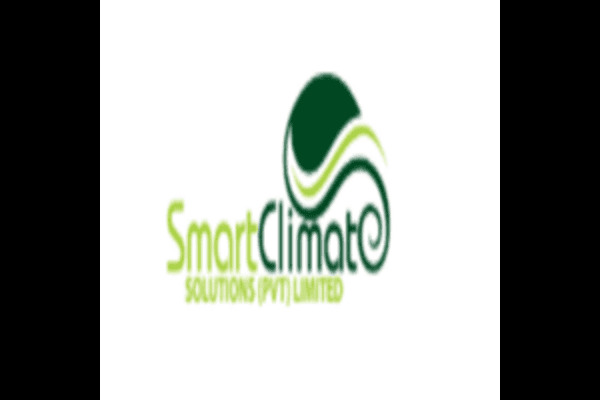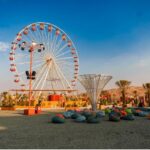Modern buildings require smart, energy-efficient, and adaptable HVAC systems. The Hisense VRF inverter system delivers all three qualities. This technology is revolutionizing how commercial and residential spaces handle heating and cooling. With advanced inverter control and intelligent operation, Hisense VRF systems offer unmatched performance and cost savings.
In this guide, we will explore how the Hisense VRF inverter system boosts HVAC performance through smart technology, energy efficiency, and precise control. We’ll cover its core features, applications, and the reasons it stands out in today’s HVAC market.
Understanding the Hisense VRF Inverter System
A VRF (Variable Refrigerant Flow) system adjusts the refrigerant flow to different indoor units. The Hisense VRF system uses advanced inverter-driven compressors that vary the speed based on load requirements. This enables precise temperature control and energy-efficient operation.
Hisense integrates cutting-edge technology in its VRF systems. The inverter compressor automatically adjusts output to meet demand, reducing power consumption. This flexibility ensures consistent comfort in multiple zones without wasting energy.
Key features include:
- Variable compressor speed for optimized performance.
- Intelligent temperature sensors for accurate control.
- Independent zone operation for personalized comfort.
These features make the Hisense VRF inverter system an ideal choice for both large buildings and small offices.
How Hisense VRF Inverter System Boosts HVAC Performance
The Hisense VRF inverter system boosts HVAC performance through its ability to adapt to varying load conditions. Traditional HVAC systems operate in on-off cycles, leading to energy loss and inconsistent temperatures. Hisense VRF eliminates this issue through continuous modulation.
The inverter compressor automatically adjusts speed according to real-time demand. This maintains stable indoor temperatures and prevents unnecessary energy use. Moreover, the intelligent control system monitors outdoor and indoor temperatures to optimize refrigerant distribution.
Performance-enhancing factors include:
- Continuous operation at variable speeds.
- Stable temperature control across multiple zones.
- Reduced mechanical stress on components.
- Higher energy efficiency and longer lifespan.
In short, the Hisense VRF inverter system transforms HVAC efficiency through advanced inverter-driven technology.
Advanced Inverter Technology Explained
The heart of every Hisense VRF system lies in its inverter technology. Inverter technology allows compressors to run at different speeds, unlike traditional fixed-speed compressors. This flexibility minimizes energy waste and enhances comfort.
Hisense uses DC inverter compressors with smart control algorithms. These algorithms adjust compressor output based on load and environmental factors. As a result, the system provides precise climate control while maintaining low energy consumption.
Benefits of inverter technology include:
- Quick response to temperature changes.
- Smooth operation with minimal noise.
- Lower electricity costs due to reduced energy usage.
- Extended lifespan of system components.
This advanced technology ensures optimal HVAC performance, making Hisense VRF a leader in modern cooling solutions.
Energy Efficiency and Cost Savings
Energy efficiency is the primary reason many businesses choose the Hisense VRF inverter system. The inverter-driven compressor consumes only the energy required to meet the current load. This results in significant energy savings compared to conventional HVAC systems.
Hisense VRF systems also reduce operational costs by minimizing on-off cycles. They maintain desired temperatures more consistently, improving both comfort and efficiency.
Key points of cost efficiency:
- Lower electricity consumption.
- Fewer maintenance requirements.
- Optimized power usage during partial load operation.
- Reduced energy bills over time.
The combination of smart control and energy efficiency makes Hisense VRF a wise long-term investment for any facility.
Smart Zoning and Individual Control
One of the standout features of the Hisense VRF inverter system is its smart zoning capability. Each indoor unit operates independently, allowing customized temperature control for different zones or rooms.
For example, office spaces, conference rooms, and lobbies can have distinct temperature settings. This enhances comfort while saving energy. Occupied areas can stay cool or warm, while unused zones can be set to energy-saving mode.
Advantages of zoning control:
- Personalized comfort in every room.
- Elimination of energy waste in empty zones.
- Improved productivity and satisfaction in commercial spaces.
- Enhanced system efficiency through targeted operation.
Such precision control helps businesses and homeowners achieve maximum efficiency and comfort simultaneously.
Smart Control and Monitoring Features
The Hisense VRF inverter system includes advanced control and monitoring options. Users can manage settings through wired or wireless controllers, smart thermostats, or even building management systems.
Hisense offers intelligent control software that enables remote access and real-time performance tracking. Facility managers can monitor energy usage, adjust settings, and diagnose issues quickly.
Key smart control features include:
- Centralized monitoring and scheduling.
- Real-time performance data visualization.
- Wi-Fi and app-based control.
- Automatic fault detection and alerts.
These smart features simplify management while ensuring that the system operates at peak performance levels.
Design Flexibility and Installation Benefits
The Hisense VRF system offers flexible design options suitable for a wide range of building structures. Whether for offices, hospitals, schools, or residential complexes, it adapts easily.
Multiple indoor unit types and capacities can be connected to a single outdoor unit. This versatility simplifies installation and reduces the overall footprint. Hisense also provides modular outdoor units for scalability in large projects.
Installation advantages include:
- Compact outdoor unit design.
- Flexible piping layout for long distances.
- Simple integration with building architecture.
- Reduced installation time and labor costs.
Such flexibility makes Hisense VRF an ideal choice for architects, builders, and engineers.
Reliability and Long-Term Performance
Hisense prioritizes durability and reliability in its VRF systems. The Hisense VRF inverter system is built using high-quality components and advanced engineering. The inverter compressor operates smoothly under varying loads, reducing mechanical wear.
Moreover, Hisense systems undergo strict testing for temperature resistance, vibration control, and long-term reliability. This ensures consistent performance even under harsh weather conditions.
Reliability highlights:
- Robust construction for extended lifespan.
- Consistent performance in extreme climates.
- Advanced self-diagnosis for maintenance efficiency.
- Proven reliability in commercial and industrial settings.
Hisense ensures that customers experience minimal downtime and long-lasting value from their investment.
Environmental Impact and Sustainability
Sustainability is a key focus in today’s HVAC market. The Hisense VRF inverter system supports eco-friendly operations by minimizing energy waste and reducing greenhouse gas emissions.
Hisense uses R410A and R32 refrigerants that are environmentally friendly. The inverter compressor further lowers carbon emissions by adjusting power usage intelligently.
Eco-friendly benefits include:
- Reduced carbon footprint.
- Use of eco-safe refrigerants.
- High energy efficiency ratios (EER and COP).
- Compliance with global environmental standards.
By choosing Hisense VRF systems, businesses contribute to a sustainable and cleaner environment.
Applications of Hisense VRF Systems
The Hisense VRF inverter system suits various applications across different industries. It delivers efficient climate control in multiple types of facilities.
Common applications include:
- Commercial buildings – Offices, malls, and showrooms benefit from zoning and energy efficiency.
- Educational institutions – Provides quiet, reliable cooling for classrooms and auditoriums.
- Healthcare facilities – Ensures clean, stable air environments essential for hospitals and clinics.
- Hotels and residences – Offers personalized comfort in every room.
This wide applicability makes Hisense VRF a top choice in both commercial and residential sectors.
Conclusion
The Hisense VRF inverter system boosts HVAC performance by combining inverter technology, smart zoning, and superior energy management. It ensures comfort, reliability, and sustainability across diverse environments.
With intelligent control, eco-friendly operation, and long-term durability, Hisense VRF remains a top-tier HVAC solution. Whether for large buildings or small offices, it delivers consistent comfort and reduced energy costs.
Investing in a Hisense VRF inverter system means investing in advanced technology, environmental responsibility, and long-term performance excellence.
Frequently Asked Questions (FAQs)
- What is the Hisense VRF inverter system?
The Hisense VRF inverter system is an advanced HVAC solution that adjusts refrigerant flow to meet variable cooling or heating needs efficiently. - How does the Hisense VRF inverter system boost HVAC performance?
It optimizes compressor speed, maintains stable temperatures, and reduces energy use through smart inverter technology. - Is the Hisense VRF system suitable for large buildings?
Yes, it’s ideal for large buildings, offering multi-zone control and scalable installation options. - Does the Hisense VRF system save electricity?
Yes, inverter-driven compressors significantly reduce power consumption compared to traditional on-off HVAC systems. - What makes Hisense VRF systems environmentally friendly?
They use eco-friendly refrigerants and consume less power, minimizing greenhouse gas emissions. - Can the system be controlled remotely?
Yes, Hisense VRF systems support smart controls, allowing users to manage settings remotely via apps or controllers. - How long does a Hisense VRF system last?
With proper maintenance, the system can last over 15 years, offering reliable and efficient performance.


